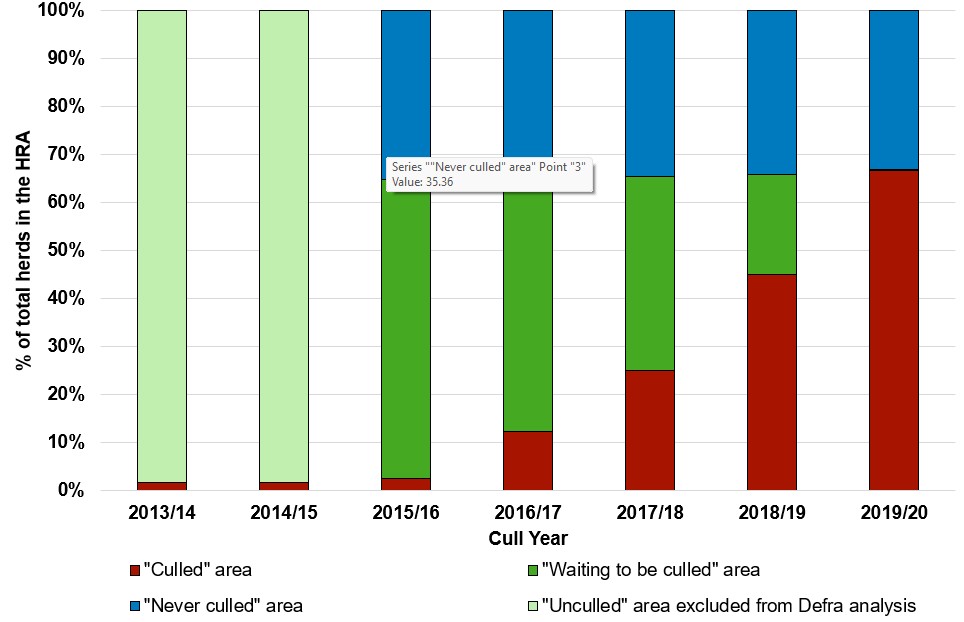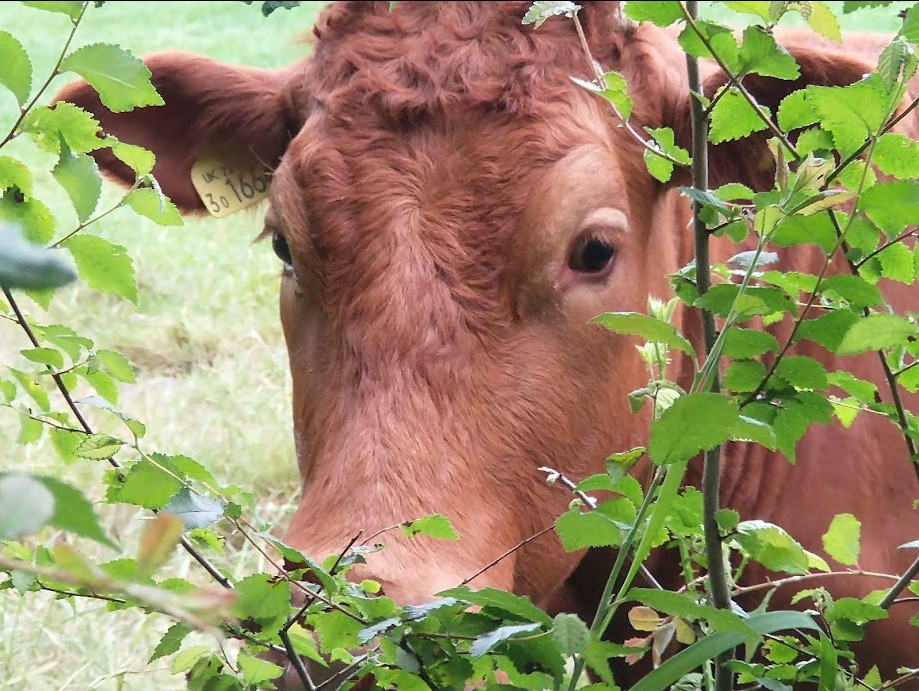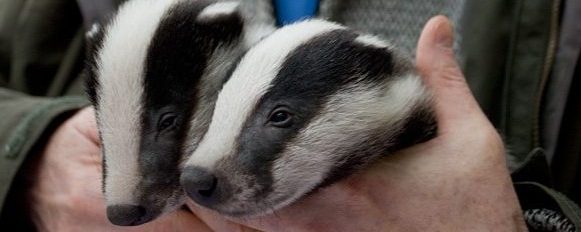
A new peer reviewed scientific analysis (Langton et al.) of the effects of the current badger cull was published in Veterinary Record on March 18th this year. Alongside the summary of the paper, Defra published a rebuttal of the science. There followed a conversation in Vet Record over the Langton et al. data versus the Defra data, and six weeks later Defra admitted that they’d got their data wrong. This is very worrying as it suggests that they have not been accurately monitoring the effects of culling as they should be, and as they assured a High Court Judge that they would back in 2018. Importantly, however, Defra maintained that although they had got their calculations wrong, this didn’t change their overall conclusion that the Langton et al. paper was ‘wrong’.
So what have Defra said is ‘wrong’ about the Langton et al. analysis? Let’s take a look……
Their main argument seems to be that data has been ‘inappropriately grouped’ because the impact of culling on cattle takes some time to appear. They claim this because Langton et al. add culled areas into the analysis in the years following commencement of culling. However, since Defra originally forecast an average annual 16% benefit from badger culling starting from year one, this is an appropriate approach. Indeed their own graph shows substantive declines in bTB herd breakdown incidence in year 1 and year 2. It is not clear how Defra’s argument can be valid on its own presentation. And even if there was some ‘dilution’ or ‘masking’ effect created by having early-year cull data in the analysis, if badger culling was, as claimed by Defra, ‘working’, it would still be possible to pick up a signal of any so-called ‘benefit’ from culling. But there is no detectable effect. None. Twenty-six statistical models failed to find any effect. Four independent peer reviewers, including epidemiological statistician specialists agreed and found the analyses robust.
OK, so actually there is nothing ‘flawed’ or ‘inappropriate’ or ‘wrong’ about the methodology as used in the paper, but Defra seem to carry on in denial, not wanting a conversation about it. How about the data analysis that Defra’s Christine Middlemiss and Gideon Henderson present in Vet Record, and which is also presented by Chief Vet Middlemiss in her 18th March blog?
Well, their graph starts in September 2015, not 2013 when the current badger culling policy began. Why might they do this? bTB had been rising in the High Risk Area for years, with the same trend being observed in nearly all areas. By starting their graph in 2015, Defra is obscuring the fact that bTB had already peaked before badger culling was rolled out to any extent, and has subsequently been declining in all areas. The Defra approach is called ‘selective use of data’, and it conceals the bigger picture of what is more likely happening, as shown in the published paper.
 Again, Defra selected a subset of ‘never culled’ badger cull areas to compare with ‘culled’ areas. Why have they done this? Because if you compare ‘all’ the unculled areas with ‘all’ the culled areas, those 26 different statistical models used in Langton et al. fail to find any difference in levels of bTB between them. What is the difference between Defra’s ‘never culled’ data area & Langton et al.’s unculled data area? Well for a start Defra’s never culled area is very much smaller than Langton et al’s unculled area (see figure), about 30% of it in fact. Defra are are comparing only the blue (unculled) and red (culled) area data, but none of the green unculled area data; all area data were used in the Langton et al. analysis. The weakness of Defra’s analysis is their use of a smaller dataset. This could potentially exaggerate any difference between the compared areas. Again, Defra is selectively using data and adding uncertainty to claim a benefit, when impartial analysis using all suitable and available data shows there to be none. Defra’s approach is arguably less appropriate than that of Langton et al.. And of course their analysis is not peer reviewed, i.e. properly checked by independent experts. It is disappointing to see it being published.
Again, Defra selected a subset of ‘never culled’ badger cull areas to compare with ‘culled’ areas. Why have they done this? Because if you compare ‘all’ the unculled areas with ‘all’ the culled areas, those 26 different statistical models used in Langton et al. fail to find any difference in levels of bTB between them. What is the difference between Defra’s ‘never culled’ data area & Langton et al.’s unculled data area? Well for a start Defra’s never culled area is very much smaller than Langton et al’s unculled area (see figure), about 30% of it in fact. Defra are are comparing only the blue (unculled) and red (culled) area data, but none of the green unculled area data; all area data were used in the Langton et al. analysis. The weakness of Defra’s analysis is their use of a smaller dataset. This could potentially exaggerate any difference between the compared areas. Again, Defra is selectively using data and adding uncertainty to claim a benefit, when impartial analysis using all suitable and available data shows there to be none. Defra’s approach is arguably less appropriate than that of Langton et al.. And of course their analysis is not peer reviewed, i.e. properly checked by independent experts. It is disappointing to see it being published.
What Defra are doing is picking pieces of data from areas of their choosing, using data from years of their choosing, holding them up, and saying, ‘look, we can see a difference’. It’s simply not acceptable to try to criticize a piece of peer-reviewed science like this, using hastily cobbled together snippets, to get your calculations wrong, and still claim that you are right.
What Middlemiss, Henderson and a few paid Defra contractors seem unable to accept, is that the analysis in Langton et al. points very convincingly to cattle testing initiating a reduction in bTB in Englands High Risk Area. Of all the statistical models used in Langton et al., it is the the one in which the cull is excluded that gave the greatest support i.e. a model that did not include culling as a covariate. So without the cull as an effect in the decline in bTB rates, it is cattle measures that are likely to be the driver and this is the best scientific evidence of that to-date.
There is a Crowd Fund for the upcoming Judicial Review Appeal of the ‘ecological impacts of badger culling’ case. You can donate to help cover essential costs here:
Thank you.
Discover more from The Badger Crowd - standing up for badgers
Subscribe to get the latest posts sent to your email.

